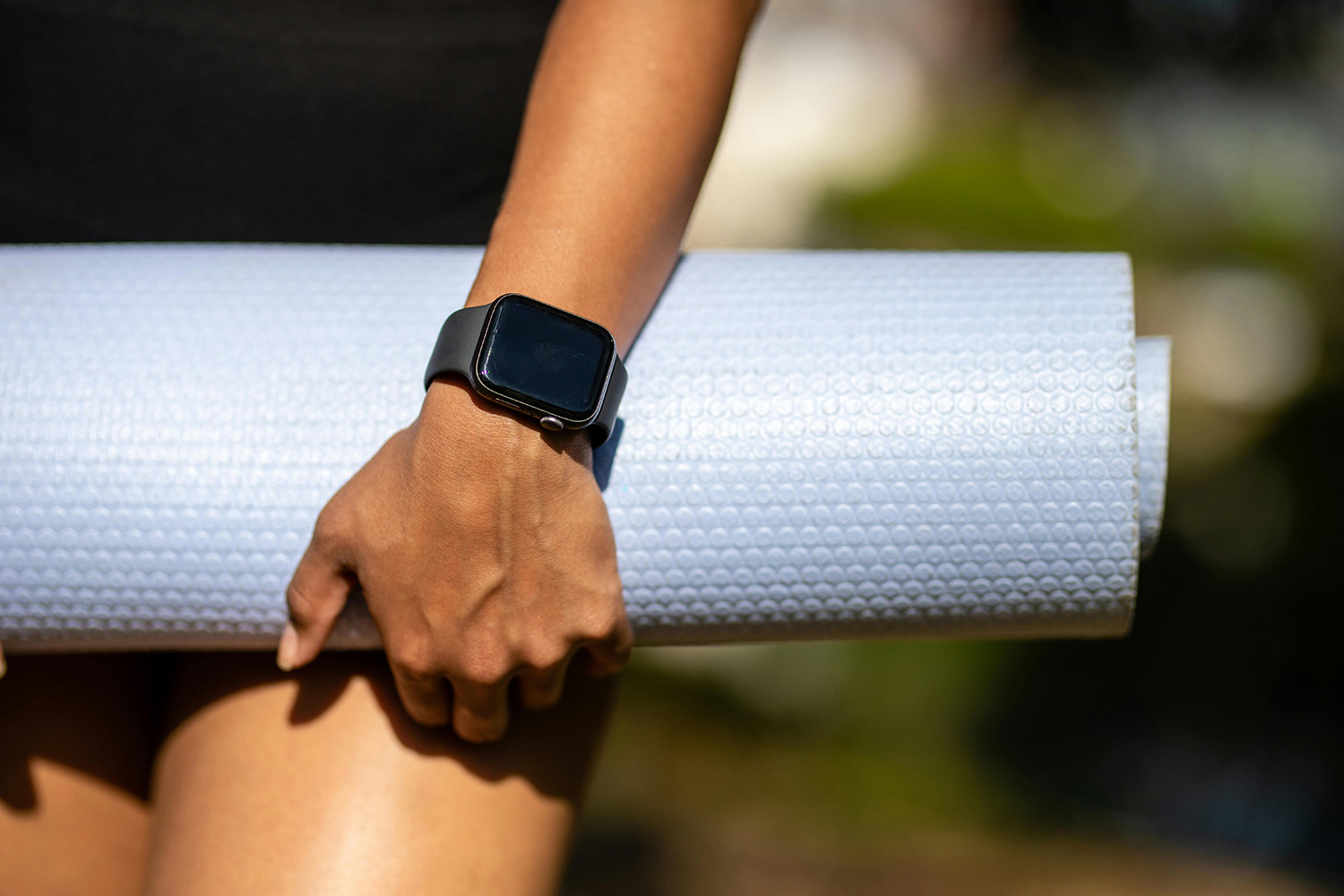Staying fit and energized in a demanding tech job isn’t just about hitting the gym – it’s about hacking your approach to exercise and mindset with science. In this guide, we’ll explore the cutting-edge concept of quantum fitness, where principles from quantum physics, mindset for peak performance, and biohacking converge to help tech workers optimize their health. We’ll discuss how a scientific fitness optimization strategy can improve your workouts, why mindset is crucial for peak performance, and how to boost energy for workouts using evidence-based methods. By the end, you’ll understand how to apply a data-driven fitness approach to your own routine – and why viewing your body through a quantum lens might just give you the edge you need.
The Quantum Physics of Fitness and Energy
At first glance, quantum physics and your workout routine seem worlds apart. Quantum science is all about energy, particles, and the surprising ways they behave – so what does that have to do with your morning run or lifting session? Quite a lot, it turns out. Quantum physics teaches us that everything is made of energy, and even observation can influence reality (the famous “observer effect”). In fitness, this translates to a focus on energy and training methodologies: how you channel your energy, recover, and even perceive your effort can change your results. For example, maintaining a calm, focused mind (the observer) during training can improve form and efficiency. Just as two entangled particles can influence each other across distances in quantum theory, your mindset and body are deeply connected in exercise. A positive mental state can trigger physiological responses that enhance strength, endurance, and recovery. In other words, energy isn’t just something you burn – it’s something you harness.
Moreover, a quantum perspective reminds us that improvement isn’t always linear. In the subatomic world, particles make “leaps,” and similarly, your fitness progress can sometimes happen in quantum leaps after periods of small changes. By embracing this mindset, you stay patient and persistent, knowing that consistent tiny changes (like micro-adjustments in diet, sleep, and workout routines) can lead to big breakthroughs. This fusion of quantum theory and fitness is a fresh way to remind tech-savvy individuals that scientific principles underpin our training: from the ATP energy in your cells to the muscle fibers firing during a heavy lift, it’s all physics and biology working together. By viewing your workouts through this lens, you treat your body like a complex system – one that you can tweak and optimize with a scientific approach to fitness rather than old-school guesswork.
Mindset and Performance: The Mental Edge
Your mindset might be invisible, but it’s one of the most powerful tools in your fitness arsenal. Research by Stanford psychologist Carol Dweck shows that individuals with a growth mindset (believing abilities can be developed) consistently outperform those with a fixed mindset. This applies to the gym as much as the classroom. A mindset for peak performance means you view challenges (like pushing through a tough set or committing to a new diet) not as threats, but as opportunities to improve. For a tech worker used to solving problems and iterating on code, this growth mindset will feel familiar – it’s about continuous improvement. When you hit a plateau in strength or struggle to stick to a routine, the right mindset helps you persist and adapt your strategy (“How can I adjust my approach?”) rather than giving up.
Mental resilience is crucial. Long hours debugging or managing projects can drain you, and it’s easy to skip workouts or lose motivation. Here’s where mindset techniques come in: visualization, goal setting, and affirmations can program your brain for success. Visualization is like mental rehearsal – envisioning crushing that PR (personal record) or finishing a 5K run strongly can actually prime your muscles and nerves to perform better when the moment comes. Positive affirmations (such as telling yourself “I am getting stronger and healthier every day”) may sound cheesy to some techies, but they reinforce the neural pathways of confidence and determination. Over time, these thought patterns translate into real performance gains. Remember, the brain is the command center for your body: a focused, empowered mind will produce more force, better endurance, and superior technique. Cultivating a performance mindset – perhaps through mindfulness meditation or just a pre-workout ritual that gets you “in the zone” – can yield tangible improvements in your training outcomes.
Biohacking for Tech Workers: Upgrading Your Body and Mind
Tech professionals are no strangers to biohacking – the trend of applying a hacker’s mindset to optimize biology and health. In fact, biohacking is going mainstream, with searches for “biohacking” skyrocketing by 394% over the past decade. This movement includes everything from nootropics (brain-enhancing supplements) and intermittent fasting, to high-tech gadgets that track biometrics. For tech workers, who often pride themselves on being “life optimizers,” biohacking offers a way to level up physical and mental performance. According to industry experts, many tech folks and entrepreneurs eagerly embrace scientific self-improvement; they form a core customer base of “life optimizers” making conscious daily decisions to improve cognitive and athletic performance. In other words, the same people who A/B test code are now A/B testing their workout and recovery routines.
So, what biohacks are most relevant to fitness? Here are a few that align with scientific fitness optimization principles:
- Intermittent Fasting – Cycling between eating and fasting windows can improve insulin sensitivity and encourage fat loss. Many find it also boosts mental clarity during work hours (less post-lunch crash), indirectly supporting better workouts by regulating energy levels.
- Nootropics and Supplements – Smart drugs and supplements (like caffeine, L-theanine, creatine, or BCAAs) can enhance focus, energy, and recovery. The key is to choose evidence-backed supplements. For instance, creatine is one of the most researched supplements that can improve high-intensity exercise performance.
- Wearable Tech & Tracking – Utilizing fitness trackers or apps to gather data on sleep, heart rate variability, calories burned, etc., allows you to adjust your training and recovery based on real metrics (a very data-driven fitness approach). The self-quantification trend is huge – the wearable devices market is already worth over $178 billion in 2024, showing how many people are embracing tracking.
- Environmental Hacks – Tech offices are known for LED screens and indoor air – stepping outside for sunlight or using blue-light blockers at night can improve sleep quality. Better sleep equals better muscle recovery and hormone balance for fitness.
- Recovery Tech – Gadgets like percussive massage guns, infrared saunas, or even electronic muscle stimulation devices are becoming popular. They appeal to the tech worker’s love of gadgets while serving a purpose: optimizing recovery time so you can train harder with less injury risk.
Biohacking is all about personalization. Not every hack works for everyone, so experiment (safely) and track results. Much like debugging a program, change one variable at a time – maybe start by adjusting your sleep schedule or trying a different pre-workout nutrition plan – and note the effects on your energy, mood, and performance. By iterating, you’ll compile a “personal user manual” that helps you get the most out of your body and mind. Remember, biohacking should always be grounded in science and safety: it’s about science-based performance enhancement, not sci-fi. When done right, it can give tech professionals a tangible edge in fitness and daily productivity.
A Scientific Approach to Fitness Optimization
Gone are the days of blindly following bro-science myths in the gym. Busy professionals in tech prefer efficiency and evidence – they want to know that every minute spent exercising has a purpose. That’s where a scientific approach to fitness optimization comes in. This means using research-backed training methods, data analysis, and even principles from engineering to fine-tune your fitness plan. Many tech workers apply the same analytical mindset from their jobs to their health: as noted, a growing number of people are tracking health metrics and using that data to make informed adjustments. To start optimizing scientifically, begin by gathering baseline data: your body composition, lifting stats, run times, etc. Then set specific, measurable goals (just like OKRs or KPIs in business).
Embracing data-driven fitness, you might keep a training log or use apps that record your workouts. Over time, patterns emerge – maybe you notice you plateau on strength gains when sleep drops below 6 hours, or you run faster in the evenings than mornings. These insights allow you to tweak variables intelligently. Perhaps you schedule heavy workouts for weeks when work stress is lower, or increase protein intake when upping training volume because the data shows it aids your recovery. The scientific method (hypothesize, experiment, measure, adjust) can turn your fitness journey into a fascinating R&D project for yourself.
Crucially, a science-backed approach also means following evidence-based training principles that researchers and top coaches agree on. For example, studies show the importance of progressive overload – gradually increasing the weight or reps to stimulate muscle and strength gains. They also highlight balanced programming: including strength, cardio, and mobility work for overall fitness and injury prevention. Leverage quality information from reputable sources (peer-reviewed studies or certified trainers) rather than TikTok fads. If you’re a true techie, you might enjoy diving into exercise science literature or even writing a small script to analyze your workout data! But even at a basic level, being systematic and informed in your fitness routine means you’ll waste less time on what doesn’t work, and focus more on what does. The result? Better performance, with the kind of optimization that would make any engineer proud.
Energy Management: Training Methodologies to Boost Your Energy
Between debugging code and back-to-back meetings, tech workers often find their energy drained by day’s end. How can you ensure you still have fuel in the tank for a workout, and that your training adds to your overall energy rather than sapping it? This comes down to smart energy management and choosing training methodologies that complement your busy lifestyle. First, understand that energy in fitness isn’t just a metaphor – it’s literally about how your body converts food and oxygen into the ATP that powers your muscles. To boost energy for workouts, start with the basics: proper nutrition, hydration, and sleep. No amount of fancy tech or hacks can compensate for a poor diet or chronic sleep deprivation. Think of these as the power source for your “human hardware.” A balanced diet with adequate protein, complex carbs, and healthy fats will keep your blood sugar stable and muscles fueled. Staying hydrated (aim for 8+ glasses of water a day) can prevent the fatigue and decreased focus that even mild dehydration causes.
When it comes to training methodologies, if you’re crunched for time, consider high-intensity interval training (HIIT) or circuit training. These methods are efficient and have been shown to improve cardiovascular fitness and insulin sensitivity in shorter sessions. They also induce endorphin release – giving you that famous “runner’s high” or post-workout euphoria that can actually increase your mental energy for tackling the next day’s challenges. Another approach is to slot in micro-workouts: 10-minute mini sessions (e.g., a quick bodyweight routine or a brisk walk around the campus) sprinkled through your day. This can break up sedentary computer time and keep your metabolism humming. Many tech companies now recognize the value of these breaks; a short movement break can reinvigorate your focus for coding while contributing to your fitness goals.
Additionally, listen to your ultradian rhythms – the natural energy cycles your body goes through every day. You might notice you have a mid-morning peak and an afternoon lull. Try scheduling your toughest workouts when your energy naturally peaks (if feasible with work). For example, if you’re a morning person bursting with energy at 7 AM, leverage that for an exercise session to start your day on a high note. If you’re sluggish after work, maybe a lunchtime workout suits you better. Aligning workouts with your personal energy highs means you’ll feel energized, not exhausted by exercise. Finally, incorporate recovery days and techniques (stretching, foam rolling, even yoga or mobility work) into your weekly plan. Paradoxically, resting enough is key to having more energy – it prevents burnout and ensures your body can super-compensate, coming back stronger. Remember, the goal is not to grind yourself into the ground; it’s to strategically manage and replenish your energy so you can sustain high performance in all areas of life.
Conclusion: Putting It All Together for Quantum-Leap Results
The intersection of quantum mechanics, fitness, and mindset might sound like the plot of a sci-fi novel, but as we’ve seen, it offers a powerful framework for fitness optimization. By treating your body and mind as an interconnected system – one that you can analyze, tweak, and upgrade – you open the door to continuous improvement. Tech workers have a unique advantage here: a comfort with data, experimentation, and complex concepts. Whether it’s adopting a growth mindset to push through challenges, implementing a new biohack, or re-engineering your workout schedule based on evidence, you’re essentially applying high-tech problem-solving to the most fundamental hardware you own: your own body.
Start small. Pick one idea from this article – say, tracking your sleep and noticing its effect on your workouts, or adding a ten-minute meditation to your morning to sharpen your focus – and give it a try. Over time, these incremental changes can lead to quantum leaps in your fitness and well-being. Stay curious and keep learning; the science of fitness is always evolving, much like the tech world. And remember, you don’t have to do it alone. Engaging with a community (online forums, fitness groups at work, or a coach who understands your analytical mindset) can provide feedback and support.
Ready to transform your health and performance with a scientific touch? At Sonovi, we specialize in blending cutting-edge science with personalized fitness coaching. Whether you’re a software engineer looking to boost energy or an entrepreneur aiming for peak performance, our team can help design a plan that works for you.
Unlock your quantum fitness potential – contact Sonovi today to get started on a stronger, smarter fitness journey!





Leave a Reply